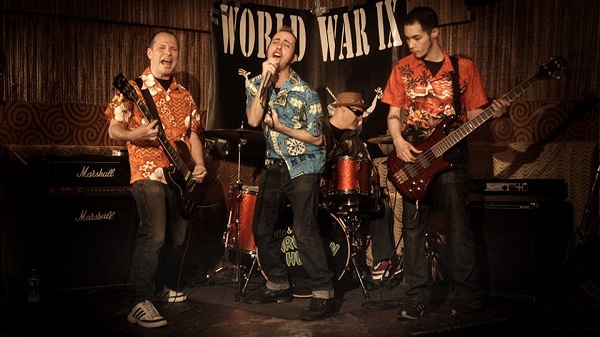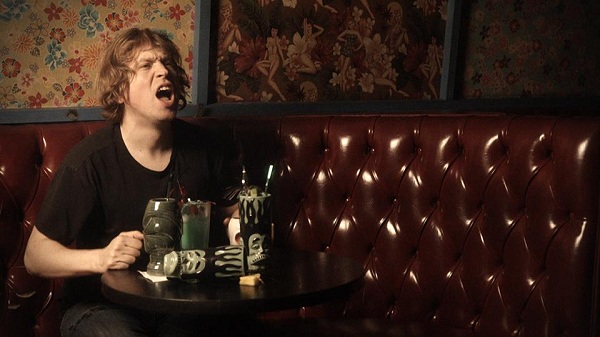How cinematic color grading is actually done
There seems to be an interest, as well as a bit of confusion, as to how color grading is done for cinema (which includes video). I’ve read the various threads on MM and, while there is some great information, there is unfortunately a lack of understanding as to how the process works on larger budget film. This is exacerbated by the plug-in manufactures that provide color tools that do not provide the kind of power necessary to really do the work—Magic Bullet and Colorista come to mind, as they were referenced in the MM forum before. There may be new plug-ins that do what I’m going to describe, but since I don’t use them, I’m only going to comment on what I saw posted on this site.
Don’t get me wrong, these new plug-ins have some nice presets. However, I’m pretty sure that once the actual process is explained, some individuals will find that Photoshop is better for smaller jobs, and that Da Vinci’s Resolve (or Apple Color, which has apparently been discontinued) is preferable for longer works.


Color correction vs. color grading
The reason those aforementioned plug-ins don’t work all that well is because they only offer global changes, and that is only part of the process. In order to understand the entire process, we first need to understand the difference between color correction and color grading. First off, color correction refers to normalizing footage for color balance and setup.
When shooting digitally, color balance isn’t such a big issue because we can generally do a custom white balance prior for each scene—but that wasn’t always the case. With film, for example, you only had daylight-balanced film and tungsten-balanced film. Even if you were shooting daylight-balanced film in daylight, the actual color temps could still fluctuate quite a bit depending on the intensity of the light (just as with still photography). Shooting tungsten didn’t have as much variation, but even different batches of film could have slight differences in color temp. Because of this, we needed to constantly correct all the footage so that we had a consistent white point from which to begin grading. Also, we wanted to normalize our levels: we refer to levels as lift/gamma/gain—lift is our black point, gamma our mid-point and gain our white point. Again, we’re not trying to be creative here, just trying to correct the footage for consistency. These changes are global in nature.
Color grading is where we make creative changes to create a “look” for the film or a particular scene within it. These changes are localized. Because of this, we use several different “rooms” to accomplish any color alteration (today these “rooms” are just tabs in a program, but there was a time when they were actual, physical rooms).



The rooms
So, let’s say you want to do that teal-in-the-shadow or cream-pink-in-the-highlights look. What I’ve seen discussed on the threads is to simply pull your shadows towards teal or your respective highlights toward pink until you create a balance; however, these are global changes and not how we would really go about doing this.
Instead, we would separate those actions into two of our secondary rooms. The first would use an HSL (hue, saturation, luminance) mask to isolate the shadow tones, and we would grade those tones toward teal, without affecting the rest of the image. Then we would open another room and select the highlight tones we wanted to alter and adjust those toward pink. Next, we would open up a third room to handle our mid-tones or maybe only our skin tones.
After all that is done, we might open up a few more rooms to make changes to certain specific elements, such as the sky, an open doorway, or a person in shadow. We might use ten or more of these secondary rooms to get the look we want. Better systems have the ability to work with nodes, which allows for very complex selections and actions.
After all of our secondary work is done, we go to our “Primary Out” and make necessary tweaks to the overall look. As with the “Primary In,” these changes are global and corrective.
Plug-ins that only allow for global changes are fine for insta-looks, but they lack the necessary power to really dig into an image color-wise.





July 27, 2014 at 7:59 am, Olivier BENEL said:
Hello,
Your blog is very interesting to me.
I’m a young French film director (short films & video clips) and I am currently trying the Nexyad skins (automatic color grading using “intelligent” technologies) : it seems to be a good way to accelerate color grading, and as far as I could see, my new project looks much better than my previous ones (although I spet weeks on it)
Have you ever tried it ? They say they want to collaborate with colorists of every countries to develop accurate color skins … maybe your talent could be useful ?µ
Take care
June 22, 2014 at 10:24 pm, Michael Clark said:
Colors may can put life in the picture or photograph .And we
can manage the colors of our picture as we want and it is possible with the new
technology color editing. It is a nice option to make a change in picture and
it is very useful for everybody as well as for professionals.
Tutorial photoshop
November 04, 2012 at 7:19 am, BrokxMedia said:
Great article!
(You should take a closer look at Colorista II to compare it better with the high end solutions. It’s not as powerful as Da Vinci, but it does offer a bit more than global adjustments alone. (And it has no presets.)
November 03, 2012 at 8:39 am, TenSilverDollars said:
I am happy you finally wrote this article. I know the information you have contributed in forums in the past. I love using film and filters and doing things digitally using old techniques that cannot be accomplished in photoshop.
November 02, 2012 at 10:57 am, kenyee said:
I’m curious about how more professional plugins do alterations on moving areas…e.g., panning across a scene w/ a window who light you decided to “color grade” instead of doing the entire frame?
November 04, 2012 at 7:10 am, -WB- said:
If the window has a distinct color (as in hue, lightness and or saturation) it can be masked. Otherwise creating a moving mask by hand is the way to go. (Like drawing and keyframing a mask in, for example, After Effects.)
November 02, 2012 at 10:29 am, Roland said:
Very informative hope to a see Part II & III
October 09, 2012 at 1:03 pm, Ayden Gotzmer said:
That was great! Could you be a little more specific as to how those “rooms” would translate into Photoshop layers? I’m very keen to try this technique and apply it to photographs.
June 13, 2012 at 5:04 pm, thirrzty said:
That was a good read. Thanks for the info.
June 12, 2012 at 12:21 pm, Timothy said:
Great topic to be talking about, and a great introduction to it. The whole idea of non-movie industry people doing color correction and grading is so new, there’s not a whole lot out there. So it’s not easy for someone not close to the industry to learn about it, but I found the book, “The Art and Technique of Digital Color Correction” to be a great (if somewhat dense) help. Not that it makes it easier, but it at least helps getting started understanding it.